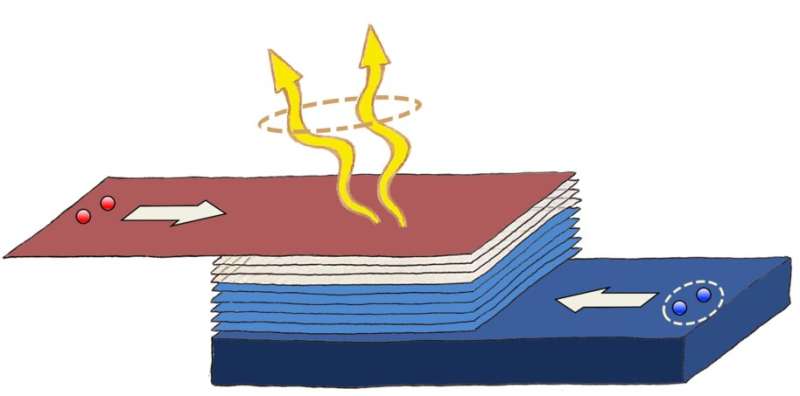Groundbreaking light sources can increase effectiveness and security of transferring quantum information

Entanglement is a central phenomenon of quantum mechanics. It enables two photons to be connected with each other regardless of distance, and it is the basis of the immense potential of quantum technologies. However, the continuing development of quantum computers, cryptography, and sensors requires new, more efficient sources of entangled photon pairs.
Researchers at Aalto University plan to build a revolutionary LED light source to generate entangled photon pairs. The research group led by Professor Pertti Hakonen has received three-year funding from the Future Makers Funding Program of Technologies Finland Centennial Foundation and Jane and Aatos Erkko Foundation.
"Previously, entangled photons have been produced with non-linear crystals, which is extremely clumsy and rather inefficient, as just a few quantum pairs are extracted, and the generation process is random and has a low efficiency," Hakonen explains.
In the new project, the researchers will develop an effective, compact, bright and controllable source for entangled photons. Their approach is based on modern material science technologies which make it possible to create layers of single or few atoms, such as graphene, boron nitride, or molybdenum disulfide, and tailor them to form custom structures.
"The layer structure can be used to adjust whether the material is locally metallic or semiconducting and also whether it is a weak or strong semiconductor. The layered structure also enables electrons to tunnel—that is, to traverse the material—to produce entangled light," Hakonen says.
A step toward the quantum internet
Integrating an entangled photon generator into quantum processors would make fast quantum communication between separate processors possible even if they are far away from each other. Inter-connected individual quantum computers could form a quantum internet through which distributed quantum computing could be done.
"Due to distributed quantum computing large quantum processors can consist of simple superconducting quantum computers, avoiding significant practical issues in individual qubit operation," Hakonen explains.
Efficient entanglement generators are also in demand by the rapidly growing quantum cryptography field. Technologies for exchanging encryption keys via sharing entangled photons between the legitimate users promise to become the basis for unconditionally secure communications.
"Any attempt to eavesdrop would break the entanglement, which is easy to detect," Hakonen adds.
Professor Zhipei Sun and his group will participate in developing sample production techniques and the classification of entangled photons produced by the device. Hakonen and Sun have shared equipment for stacking ultrathin and reaction-sensitive layered structures. Ethan D. Minot, a professor at Oregon University and visiting professor at Aalto until summer 2022, also has a central role in the project. The cryotechnology partner of the project is Aalto's spinoff company Bluefors.
Provided by Aalto University





















